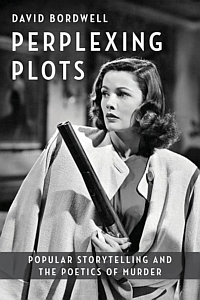Generally, storytelling, narratives, modes of presentation and the story behind it, define most works of fiction and movie plots alike. As those techniques changed over the decades (as did audiences who step by step were introduced to this), new and exiting ways of shooting film and presenting characters entered popular forms of entertainment.
 The simple, one-narrator tale in a book is not easy to find anymore; it probably would not sell. “Today we’re unlikely to run into a pure instance of the easiest narrative: that linear, single-viewpoint, reliably recounted, neatly segmented story…”
The simple, one-narrator tale in a book is not easy to find anymore; it probably would not sell. “Today we’re unlikely to run into a pure instance of the easiest narrative: that linear, single-viewpoint, reliably recounted, neatly segmented story…”
Audiences today demand much more: as they were exposed too long to various forms of experimental writing and storytelling and by now have an eye for different layers of perception, characterized by different agents in the texts or movies.
Usually, whenever new modes of storytelling or narrative techniques were introduced, it took some courageous authors of plays, fiction or later movies, to present and test these designs. And audiences were not always ready for such inventions, such a fragmented memories, flashbacks or the recapitulations of various characters who describe one and the same event in such media. It had readers and audiences wonder which one the “correct” one was (they all are). Let alone the disruption of straightforward chronology.
However, as David Bordwell in impressive manner presents, the majority of such new modes, commonly used by the avant-garde and often conferred in sophisticated environments or experimental pieces of work, very quickly after their premieres entered popular culture with a bang. Bordwell is the Jacques Ledoux Professor Emeritus of Film Studies at the University of Wisconsin–Madison, he has published massively on film history, film noir and film art.
While he meticulously provides example after example from the nineteenth and twentieth century, where he locates the source of many narrative forms common to today’s readers and movie audiences, he takes us back to a genre that more than others demands the reader’s attention, namely crime fiction. There, audiences of suspense thrillers and detective stories were additionally trained in coping with various forms of narrative experiments. After all, not all suspects and witnesses were to be trusted … in more than one way; and neither was time or the linear order. So one emphasis of this title is on the hard-boiled authors of the 1930s and 1940s and their masterful twists and experiments with narrative time, memory and reader confusion, sometimes discovered only posthumously.
By a combination of various literary developments rightfully attributed to Modernism and the high demand for entertainment goods such as movies, mystery fiction that in turn would surface in the quickly written pulps and film noir only ten years later, audiences got used to a large number of narrative “tricks” in rather short time.
Bordwell concentrates on popular authors such as Patricia Highsmith, Agatha Christie, Alfred Hitchcock, Raymond Chandler, Dorothy Sayers, and Dashiell Hammett, among others. “Perhaps most surprising, the classic whodunit also continued to provide creative options, and not just the in the cozies that kept the English tradition alive. The whodunit’s insistence on ‘the taste of the construction’ could be imposed on private-eye adventures and women-in-peril plots. Hard-boiled tales exploited time shuffling, viewpoint switches, and block construction.”
However, as his view of the genesis of the new narratives styles happened on a very broad base with huge audiences, he naturally includes films and their directors. Several works, one item under particular surveillance is Tarantino’s Pulp Fiction, from Hollywood naturally follow. Like the movies Inception and Memento by Christopher Nolan and many iconic films noir such as Laura, Rebecca, The Lady in the Lake, The Big Sleep and The Killing. “Today’s viewers are heirs to a process of schema and revision through which Anglo-American popular storytellers constantly reinvigorated devices of viewpoint, time schemes, and segmentation.”
The three parts, first going from formalism to modernism and the 1940s, then covering the development of psychological thrillers, hard-boiled detectives and crossover culture, end in part three with detailed studies of present day movies and how we experience them. Thereby covering dozens of excellent American films and hundreds of novels and series (some you may never have heard of) that were milestones and had massive effect on later works.
Be warned, this is not a small booklet you finish in a few hours. In fact, this 500 pages volume asks for cooperation and your time. Not because it employs a very difficult, academic and somewhat dry style. On the contrary, it is an easy read, particularly for a mystery movie and detective novel buff, but the countless links to books and films and modes of narrating make you remember and reevaluate the mass of popular culture you have consumed so far. Until now probably without appreciating the twists, distorted timelines and other artistic techniques so common to us these days. A highly recommended title.
Review by Dr. A. Ebert © 2023
David Bordwell. Perplexing Plots. Popular Storytelling and the Poetics of Murder. Columbia University Press (Film and Culture Series), 2023, 500 p.
